Blog
Changwen is a leading cooking utensils manufacturers. We supply high quality stainless steel cooking pots and pans to all over the world. We can also customize the local hot-selling stainless steel pots and pans. Please send your requirements to Changwen.
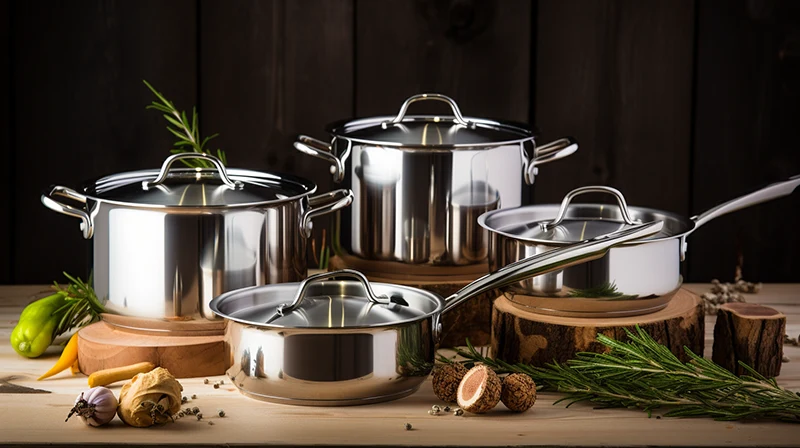
What is the difference between stainless steel 18/8, 18/10, 304, and 306
Stainless steel is widely used because of its corrosion resistance and high hardness. Stainless steel is a general term for chromium alloys. It does not refer to just one kind of stainless steel. There are hundreds of kinds of stainless steel used in various industries.
Commonly used stainless steel names in stainless steel cookware are 18/8, 18/10, 304, and 306. What are their differences?
| Stainless Steel | Composition | Characteristics |
|---|---|---|
| 18/8 | 18% Chromium, 8% Nickel | Excellent corrosion resistance, good formability, and strength. Common for kitchen utensils and appliances. |
| 18/10 | 18% Chromium, 10% Nickel | Improved corrosion resistance due to higher nickel content. Gives a bright finish. Common for high-end cookware. |
| 304 (Equivalent to 18/8 or 18/10) | 18% Chromium, 8% Nickel. Comparable to 18/8 | One of the most used stainless steels due to its excellent combination of strength, corrosion resistance, and formability. |
| 316 | 16-18% Chromium, 10-14% Nickel, 2-3% Molybdenum | Superior corrosion resistance, especially against chlorides (like salt). Ideal for harsh environmental conditions. |
Please note that while 304 and 316 stainless steel has their respective equivalents in 18/8 and 18/10, they differ slightly in terms of maximum carbon content allowable. Specifically, type 304 can have a maximum carbon content of 0.08%, whereas type 316 has a slightly reduced maximum carbon content of 0.03%.
The 18 in 304 (18-8, 18-10) represents the chromium content, and the following 8 and 10 represent the nickel content. The higher the nickel content, the stronger the corrosion resistance.
The national standard GB stipulates that 304 contains at least 8%, so ordinary 304 stainless steel is also called 18-8.
Some people often regard 18-10 stainless steel as 316 stainless steel. In fact, 18-10 stainless steel belongs to 304 stainless steel, which is similar to the usage grade of 316. The difference is that 316 contains molybdenum, 304 does not contain molybdenum, and 18-10 stainless steel does not contain molybdenum.
Commonly used stainless steel materials for cookware
The most commonly used stainless steel materials for cookware include 18/8 and 18/10 grades, 304 and 316.
Grade 304 is resistant to oxidation and corrosion, making it a popular choice for cookware. This is mainly due to its composition, which is approximately 18% chromium and 8% nickel or 18% chromium and 10% nickel. 18% chromium and 8% nickel are often used to save costs.
On the other hand, 316 (316 is not as good as 18/10) is mainly used in high-end cookware because of its higher nickel content and enhanced corrosion resistance. Grade 316 also contains small amounts of molybdenum, which provides an extra layer of protection against corrosion, especially from salt. At the same time, the price is also higher.
Are stainless steel pots safe?
Stainless steel pots are indeed safe and have been verified by multiple sources. They are used by millions of home cooks and professional chefs around the world. They are loved for their versatility, durability and high performance.
A very thin, well-adhesive, translucent chromium oxide film is produced on the stainless steel surface.
When this film is damaged, the chromium in the steel reacts chemically with the oxygen in the atmosphere, which can quickly restore the film.
However, it may be difficult to resist corrosion if exposed to chemical attack by ions, such as chloride ions (chloride ions leached from salt), which may exacerbate oxygen corrosion. If there are small pits, do not use it.
Are stainless steel pots magnetic?
The magnetism of stainless steel pots depends on their specific type of stainless steel
Most stainless steel cookware, particularly those made of type 304 stainless steel (also known as 18/10 or 18/8), are usually not magnetic. This is mainly because they contain higher amounts of chromium and nickel, which do not have magnetic properties.
However, to work on an induction cooktop, stainless steel cookware must be made of magnetic stainless steel. This is typically a variant that contains no nickel, such as 18/0 or the 400 series. Then a composite bottom must be made.
What is a composite bottom?
A composite bottom, also known as a clad bottom, in cookware refers to a layered combination of different materials used to create the base of the cookware. The purpose of this type of design is to leverage the best properties of different metals, such as heat distribution, durability, and non-reactivity.
Composite is three layers of steel, aluminum and steel. Its functions are: fast heat conduction, enhanced uniformity, not easy to stick to the bottom, and the composite bottom can prevent the pot from deforming. Some complex bottoms even have 5 or 7 layers.
What material is used for the composite bottom of cookware?
Common structures of cookware have three or five layers. What materials are generally used in these interlayers?
Aluminum: Often used as a sandwich layer in stainless steel cookware due to its excellent thermal conductivity. The aluminum layer helps distribute heat evenly across the cooking surface.
Copper: In high-end cookware, a copper core may be sandwiched between layers of stainless steel. Copper is even more conductive than aluminum, providing excellent heat distribution.
Iron: In some types of cookware, such as some types of French ovens, an iron core may be used in the sandwich. This provides excellent thermal insulation.
While a sandwich provides heat distribution and retention, it’s usually sandwiched between layers of another material (stainless steel is the most common) to prevent reaction with food and ensure durability.
Magnets verify stainless steel purity
Using magnets to verify whether stainless steel is pure 304 stainless steel is not entirely correct.
Many pots have a three-layer or five-layer composite bottom. The outermost layer is 430, which is magnetic and is a normal phenomenon. When testing magnetism, remember that the inner wall of the pot must be close to the mouth of the pot.
Popular Blog
What are the advantages of stainless steel pots?
What are the purchasing channels for cookware in Mexico?
How to choose surgical grade stainless steel cookware
China Kitchenware: A Comprehensive Overview
Does the cookware manufacturing process require adhesives?
Why do stainless steel pots stick?
Advantages of Stainless Steel Kitchen Utensils
Tags
Recommend Products
-
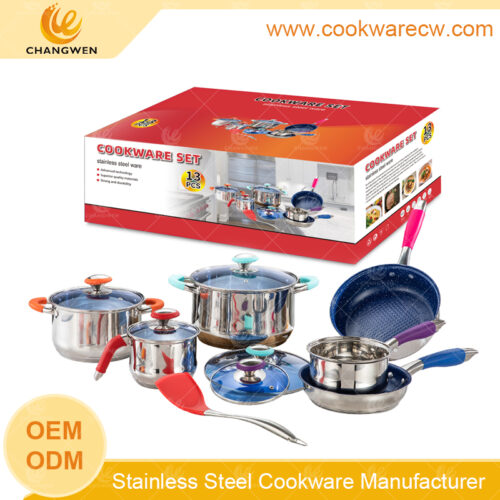
popular stainless steel pots 13pcs cookware set with heat insulated colored silicone and glass lids milkpot casseroles nonstick frypan set CW-M1206G
-
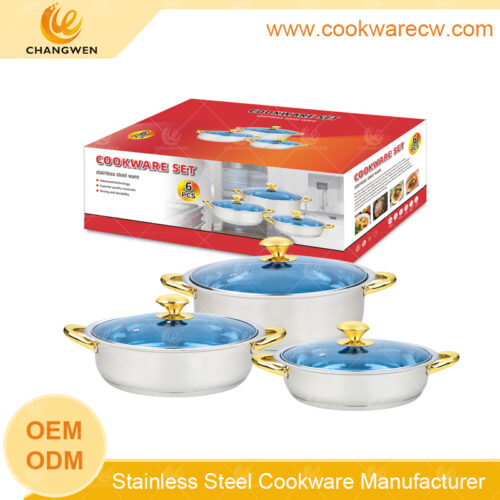
heavy kgs weights 6pcs stainless steel pots wholesale rice cooker low pots with golden handles and knobs 430 induction bottom CW-M0606
-
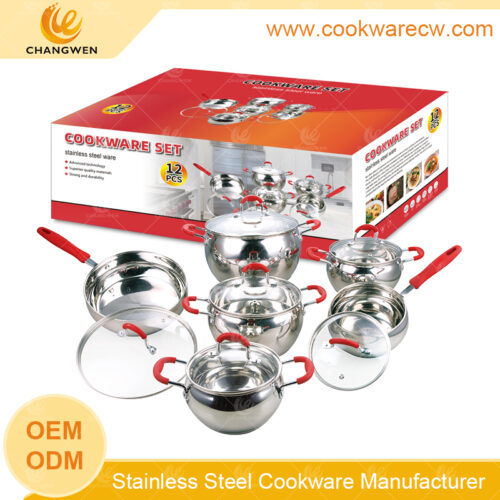
Hot sale stainless steel apple shape cookware set red silicone cover glass lid mirror polished kitchen pots and pans CW-M1219G
-
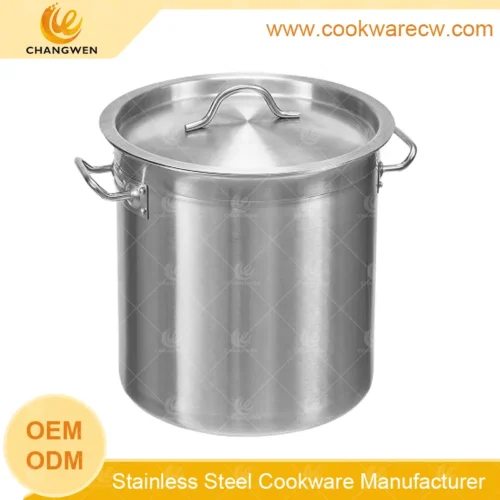
Heavy Duty Stainless Steel Cooking Utensils
-

China manufacturer stainless steel pots and pans 12pcs cooking set fry pan nonstick set mirror polished cookware 3.0L whistling tea kettle soup stock pot kitchen set steamer rack CW-M1206G
-
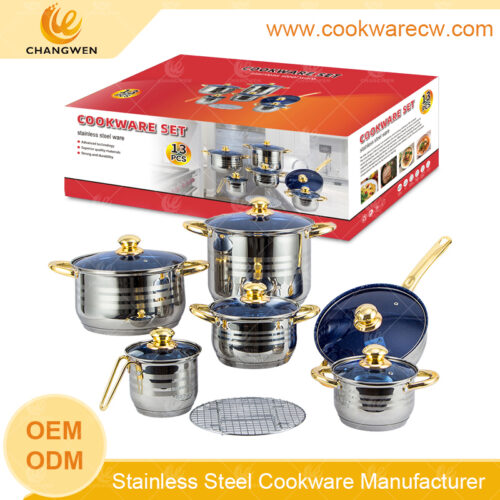
Wholesale price stainless steel pots and pans streamer rack cookware set coating inside golden wire handle milk pot with blue glass lid CW-M1304
-
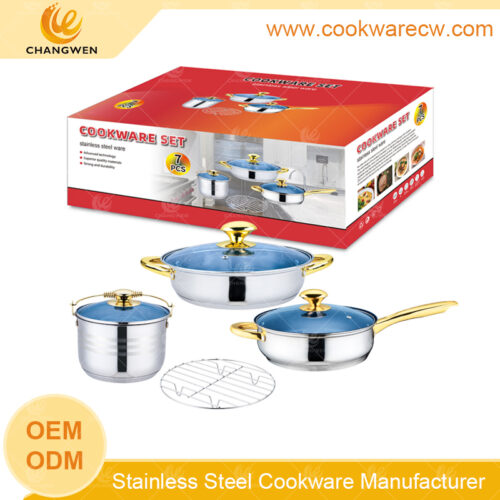
Stainless steel kitchen 7pcs cookware rice cooker with capsule bottom frypan with helper gold plated hollow handle and blue glass wire rack CW-M0701
-
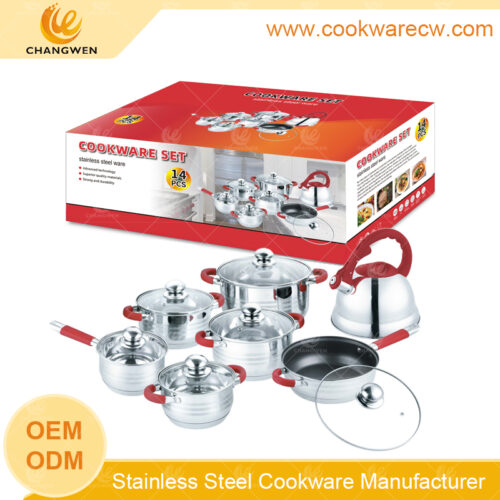
Stainless Steel Cookware Sets 14-Piece CW-M1401G
